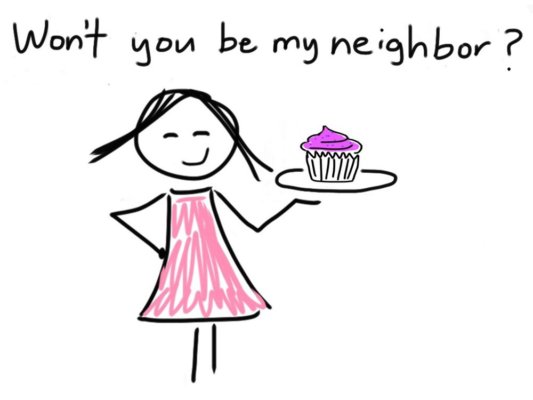Drones for Emergency Response Teams
The market for drones for emergency response teams continues to expand.

Updated 5-2020
We started reporting on drones about 5 years ago. At that time, drones were mostly high-tech toys. Two years ago we updated our reporting, and today it’s time for another update because . . .
Drones for emergency response teams are becoming more common.
Before you start looking at drones for use by your neighborhood emergency response team, however, it’s a good idea to listen to the advice I got from an excellent training film put on by the Pacific Northwest Economic Region Center for Regional Disaster Resilience. Here’s the link to the video: https://vimeo.com/296920234 One of the speakers said: “Before you decide on a project, become the local expert and understand how to collect and manage data. ” By the time you’ve done that, you’ll know what equipment you need and the rules you’ll need to follow.
The video mentioned above was by and for a governmental agency. You may not be part of a governmental agency; you may be a hobbyist. But you need to know all the rules! Here they are as of 2020 . .
Rules for hobbyists, commercial and non-governmental use of UAS (unmanned aircraft systems) . . .are changing!
You need a pilot certificate.
If you’re operating your drone as a hobbyist, that means hobbyist. You’re not operating as a service, or planning to be paid for your services, or to sell your photos, etc. In the past, you didn’t need a certificate but it looks as though you WILL need one soon if not already!
Getting a Remote Pilot Certificate from the FAA requires that you pass a test as well as meet other requirements. Here’s a link to find out more: https://www.faa.gov/uas/getting_started/part_107/remote_pilot_cert/
Register Your Drone.
Whether being flown by a hobbyist or for another reason, any UA must be registered. If it weighs less than .55 lbs you can register it online; otherwise, go to the FAA website to get started registering it on paper. Here’s the link: https://www.faa.gov/licenses_certificates/aircraft_certification/aircraft_registry/UA/
A drone weighing MORE than 55 lbs. falls into another category altogether. (That 55 lbs. includes any cargo that the drone is carrying.)
Pilot Your Drone Safely.
Even though rules change, the main thrust for hobbyists and commercial operators is always on safety. You can check in on a regular basis to monitor any changes, at http://knowbeforeyoufly.org/
Here’s a summary of the current rules:
- Drones must remain in visual line of sight of the pilot or a sighter — no first-person-view cameras. (This means no flying by what the camera shows as opposed to what you actually see from where you are standing.) You can only fly one line-of-sight vehicle at a time. Maximum distance from pilot is 3 miles.
- Maximum speed is 100 mph and maximum altitude is 400 feet.
- Pilots must be at least 16 years old and hold the “remote pilot airman certificate,” mentioned above.
- Operation is only allowed during daylight hours or twilight with appropriate lighting.
- Pilots must avoid flying over cars, populated areas or over specific people not involved in the operation.
- You must understand airspace zones and respect them. Manned aircraft always have the right of way.
- You must be aware of no-fly zones. (The best drones have “no-fly” zones built into their software.)
- The big issue, of course, is privacy. While there don’t seem to be clear cut rules regarding privacy, you’ve got to remember that there is a concept called Expectation of Privacy. This usually translates into giving people a warning if you’re going to be flying, not capturing “private” footage if you don’t need to, and deleting it if you’re asked to. If you’re part of a group, you would do well to have a privacy policy to protect your members. Here’s a reference that might be helpful: https://www.ntia.doc.gov/files/ntia/publications/voluntary_best_practices_for_uas_privacy_transparency_and_accountability_0.pdf
Please note — again! – rules keep changing! Some changes have been promised and awaited but are now on hold as a result of the Coronavirus. Get the rules at the FAA.
Using Your Drone as an Emergency Response Tool
While not commercial, and yet not recreational, here are some uses your team might be considering. Before you actually decide to implement any, be sure your use is legal.
- Use a drone to provide overhead lighting when searching an area at night
- Inspect upper levels of buildings or structures (in industrial or high-rise residential areas)
- Film damaged areas or obstructions following a disaster (as long as you don’t interfere with First Responders)
- Identify “hot spots” after a fire (using infrared technology)
- Map area covered by the CERT team to segment into manageable areas
- Find a missing person
- Search areas for survivors
- Identify pathways for access or escape or to to safer positions
- Drop markers to designate specific damages or routes to follow
- Monitor teams during training exercises with filmed records for group critique
- Transfer supplies, first aid items, batteries, replacement radios, etc.
- Transport high value items over a distance, reducing the need for multiples of expensive equipment (e.g., gas sniffer)
You can probably come up with many more.
Challenges for Emergency Teams
1-Rules may limit your emergency response team’s use.
When you look at even this short list of uses, you will see that a number of these uses would be against current rules! Let’s look again . . .
- Can’t fly at night.
- Can’t let drone out of your sight.
- Can’t fly higher than 400 feet.
- Can’t fly over people.
From our standpoint as emergency responders, these restrictions limit the use of the technology. In a serious situation the safety of our neighbors in the community is more important that the actual altitude of the drone looking for them!
You may request a waiver of some of these restrictions if you can show you can conduct your operations safely. And we have confidence that some of these restrictions may be lifted or clarified, so we are not letting them stop our analysis.
2-Battery life may limit your team’s use.
Most drones have a flying time of only around 20-25 minutes. As technology improves, that will improve. To get a couple minutes more of flight can cost a couple hundred more dollars in purchase price. No matter which model you get, plan on getting at least 3 or 4 extra batteries right along with the machine so you can rapidly put the machine back in the air.
3-Set up in advance to be able to share your images and videos.
Clearly, the emergency planning and response ideas above would generate information you’d want to share with the rest of your team or with First Responders! There are several options available – the obvious one being sending footage to YouTube or Vimeo.
However, the FAA may label your video as “commercial use” if it appears with an ad on it, whether or not you wanted it! (Again, in an emergency, I’d probably not worry about that. But be aware . . .) Other sharing options include apps provided by Facebook, Dropbox and certain drone manufacturers.
Moreover, if you share any photos, issues of privacy raise their head. Understand how you will manage your data to maintain privacy. Review the resource above in the long list of bullet points.
If you goal is to share your work, find out more before purchasing.
OK, with all this in mind,
Which drone is best for our Neighborhood Response Team?
In our community, we already have some guys who race electric cars. And there are a couple who build and fly model airplanes. The skills they bring to the table will be valuable – but not all of them are on our emergency response team, of course.
So, as we shop for a drone, we have to add “ease of set-up” and “easy to fly” to our shopping list.
Here’s the whole shopping list so far:
- Big enough to fly outside, in somewhat inclement weather (Cheap toys won’t work.)
- Strong enough to carry something to a designated location
- The best battery life we can get for the price
- Proven performance (not bleeding edge technology)
- Reasonable image and video quality, though not necessarily the highest
- Easy to set up and start flying
- Compatible with variety of hand-held mobile devices
We’ve done a lot of comparing of different machines to get to this point! I hope the data above will be helpful to you in your own search.
See our top choices for drones in Part Two of Drones for Emergency Response Teams.
Virginia
Your Emergency Plan Guide Team
P.S. I found these important additions. Become an expert before you buy or fly!
- “Report to the FAA within 10 days of any operation that results in at least serious injury, loss of consciousness, or property damage of at least $500.”
- “Failure to register an unmanned aircraft that is required to be registered may result in regulatory and criminal penalties. The FAA may assess civil penalties up to $27,500. Criminal penalties include fines of up to $250,000 and/or imprisonment for up to three years.”



 OK, so you’re in good shape when it comes to preparedness.
OK, so you’re in good shape when it comes to preparedness.